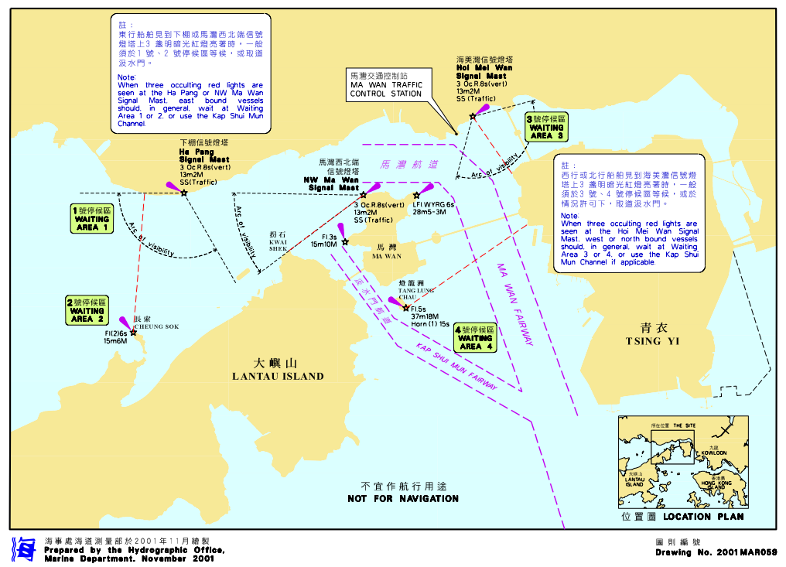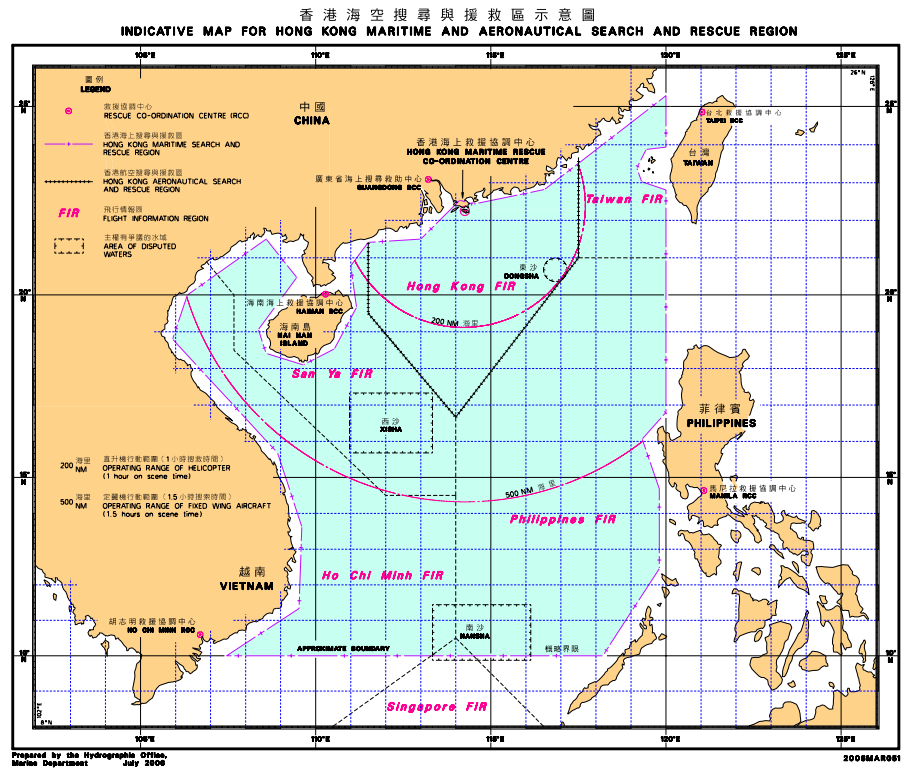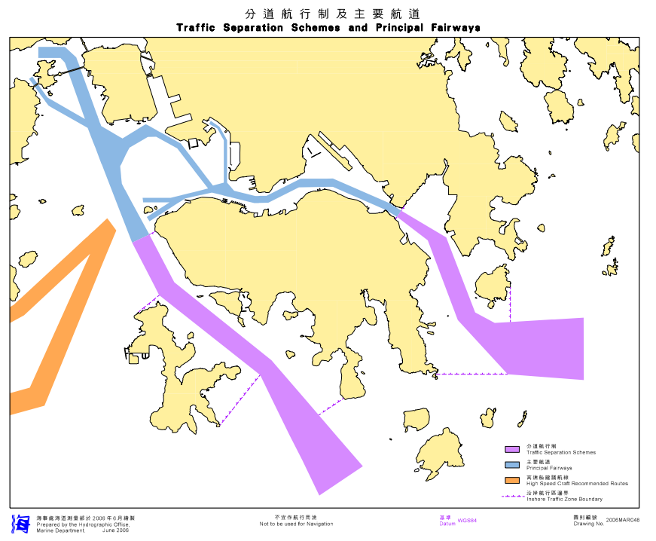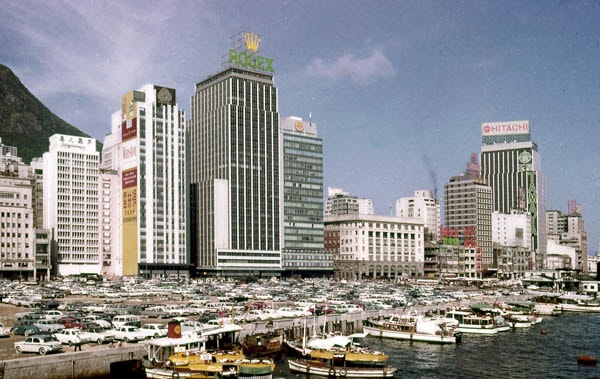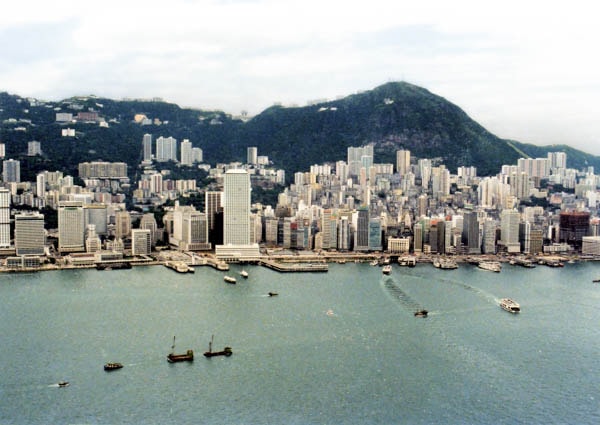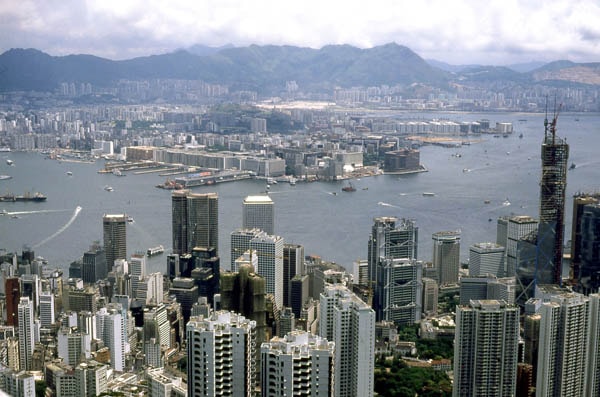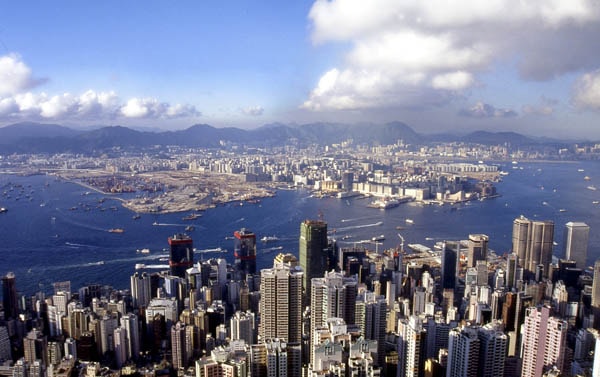Structural changes
Before the organisational changes of 1988, the Marine Department had four divisions, namely the Headquarters Division, the Crews Division, the Port and Marine District Administration Division, and the Marine Safety Division, each headed by an Assistant Director of Marine answerable to the Deputy Director of Marine and ultimately to the Director of Marine. The Headquarters Division was responsible for internal administration, planning, and the management and maintenance of government craft. The Crews Division maintained seamen’s records, administered the recruitment of seamen, and conducted examinations for certificates of competency. The Port and Marine District Administration Division managed the port, regulated ocean-going ships and local craft, managed the PCWAs, and controlled pollution within Hong Kong waters. The Marine Safety Division regulated the operation of Hong Kong’s registered merchant shipping fleet, surveyed foreign-going ships and local craft, and instituted safe working practices on board ships.
In 1988, the Marine Department was re-organised into four divisions, namely the Port Services Division, the Marine Districts Division, the Shipping Division, and the Technical Policy Division. The Port Services Division was responsible for the administration of the port and ensuring safe navigation within Hong Kong waters. Its major responsibilities included shipping control, port communications, harbour patrol, harbour cleaning, oil pollution control, regulation of the handling and carriage of dangerous goods, maintenance of aids to navigation and harbour mooring buoys, search and rescue (SAR) co-ordination, and the management of the Hong Kong-Macau Ferry Terminal and the China Ferry Terminal. The division was also responsible for implementing and operating the Vessel Traffic Management project. The functions of the Marine Districts Division were to regulate local craft and dwelling vessels, and manage typhoon shelters and the PCWAs. The division also managed the Government Dockyard and operated the Government Fleet. The Shipping Division administered the Hong Kong Shipping Register, and implemented and enforced safety standards for ships registered in Hong Kong and licensed local craft. It oversaw ship-breaking and repair, conducted investigations of shipping casualties, and designed and procured government vessels. The division also administered examinations relating to the certificates of competency and recruited seafarers. Lastly, the Technical Policy Division developed technical policies for the Hong Kong Shipping Register and standards for vessels licensed in Hong Kong. This involved the preparation of drafting instructions for new legislation, as well as producing administrative documents, instructions to surveyors, and merchant shipping notices. The division took over the functions previously carried out by the British Department of Transport in respect of Hong Kong shipping registration.
Professional management of local craft – The Local Craft Review, 1989
Junks and small craft have used Victoria Harbour and the surrounding waters for centuries. The registration of such craft was originally carried out by the Registrar General’s Department, but in 1860 this duty was taken over by the Harbour Master’s Department. The first set of regulations applicable to local vessels were the Merchant Shipping (Small Craft) Regulations of 1957, under which licensing was required for small craft such as launches, ferry vessels, motorboats, tugs, lighters, fishing junks, and cargo vessels. Until 1963, Surveyors of Ships conducted surveys of launches, ferries and similar passenger-carrying vessels of western build; after that all vessels were required to be licensed and inspected by Marine Officers and their assistants at the Licensing Offices. In 1978 shipping legislation in Hong Kong underwent a fundamental change following the enactment of the Shipping and Port Control Ordinance (Cap. 313), which established control over all shipping within Hong Kong waters. The Merchant Shipping Ordinance (Cap. 281) remained as the legislation governing the safety of ships registered in Hong Kong until the Merchant Shipping (Safety) Ordinance (Cap. 369) came into force in 1981.
Rapid technical advancement in the 1980s was one of the reasons for carrying out the Local Craft Review in 1989. Engines began to be installed on traditional craft, and more and more of these had specially designed engines. The pre-1980s standards for traditional craft were out of sync with this technological advancement, whilst the survey standards for launches continued to be linked with those for registered passenger vessels engaged on international voyages. The surveys of launches, ferry vessels and motorboats involved every aspect of seaworthiness, stability, machinery surveying and equipment testing, and were based broadly on passenger-ship standards culled from the British Board of Trade requirements. For traditional craft, however, there were no available standards. The surveys were limited to the inspection of such obvious safety hazards as fuel storage, fuel lines and other fire risks, and to the carriage and proper fitting of navigation lights, sound signalling apparatus, life jackets, lifebuoys and fire extinguishers. In order to set up a systematic regime for the control and operation of local vessels, the Marine Department launched the Local Craft Review. Those parts of the then existing legislation dealing with control and safety of local vessels were replaced by a set of more comprehensive regulations solely for the purpose of overseeing local craft.
The Port Communications Centre and the Vessel Traffic Centre
The Port Communications Centre (PCC) – An introduction
In the 1960s, the Port Communications Centre (PCC) was under the Port Control Division and was staffed by a Senior Marine Officer, Marine Officers, and Marine Inspectors. They were responsible for day-to-day communications with ocean-going vessels regarding the allocation of mooring buoys and anchorages, etc. The main duties of the PCC were to monitor the arrivals and departures of vessels. Through the establishment of calling-in points such as Waglan, Po Toi Island and Green Island, the PCC was able to keep track of every vessel arriving at and departing from Hong Kong. Efficient communications were maintained between vessels and the PCC with the use of Morse Code (until the early 1980s) and VHF channel 12. This required knowledge of the vessels’ call sign, identity and other key specifications. Other equipment such as telex, tele-printers, flash light communication or even visual observation was also employed to monitor traffic. The movements of ships were recorded in log books and trip papers, whilst whiteboards and magnetic ships were also used to visualise the status of the port.
Search and rescue relating to accidents and emergencies was a responsibility of the PCC until the establishment of the Maritime Rescue Co-ordination Centre (MRCC). The PCC also co-operated with the Harbour Services Patrol Unit (HSPU) by placing requests with the HSPU for action to enforce the Merchant Shipping Regulations and ensure compliance with certification requirements as well as international port regulations.[37] On 16 October 1989, the Vessel Traffic Centre commenced operation and took over the duties of the PCC.
The Vessel Traffic Centre (VTC)
The Marine Department recognised the need for a Vessel Traffic Service (VTS) as early as 1982. The VTS included support functions such as the handling of port formalities and procedures and the control of dangerous goods. Funds were made available in 1986 for the purchase and installation of a VTS system, one that would be modelled on the Canadian system. Commissioning took place in 1989 and so began the service provided by the Hong Kong VTS to the shipping industry. Since 1989, marine traffic has increased by around 12% per annum, requiring ever more interactions with vessels. In essence, the policy was concerned with the active strategic management of vessel traffic movements in Hong Kong waters. For example, an anti-bunching system applied in relation to the boarding of pilots during busy hours. By co-operating with the Hong Kong Pilots Association, the Marine Department limited the number of vessels entering Hong Kong through restricting hourly pilot orders, thus avoiding traffic congestion at the main entrance to the harbour.
The first generation monitoring system – Taking care of a ship from entering to departing Hong Kong waters
Located on the outer island of the Hong Kong-Macau Ferry Terminal in Central, the Vessel Traffic Centre (VTC) was established in 1989 to facilitate the arrivals, berthing, unberthing and departure of vessels. By providing information, traffic organisation and navigational services, the VTC monitors and regulates vessels navigating the waters of Hong Kong. The use of radar and the computerised Informatics Sub-system ensures the working efficiency of the VTC. Vessels participating in the VTS receive navigational information and advice from the VTC through the very high frequency (VHF) radio network. Upgraded in 2002, the VTS system possesses advanced technologies to cater for rapid traffic growth.
To ensure effective vessel monitoring, the waters of Hong Kong are divided into three sectors, namely the eastern approaches sector, the harbour sector, and the western approaches sector. A VHF channel is assigned to each sector to facilitate communication with vessels. Sector consoles are manned by Vessel Traffic Regulators (VTRs). Before the introduction of the Automatic Identification System (AIS) in Hong Kong VTS in 2002, VTRs were required to identify and monitor the traffic movements of targets by comparing the reported position of targets against the position measured by the VHF direction finders, shown as bearing lines on the traffic display. After identifying a target, the VTRs will assign a tag to it with a coded message bearing the name of the ship and other relevant information. The VTC’s various services ensure smooth and efficient port operations in Hong Kong.
The Ma Wan Traffic Control Station – Increasing efficiency
Even in the early 1990s, navigation in the Ma Wan Channel was not easy due to its narrow bend, the strong current and the heavy traffic. During the seasonal Pearl River run-offs, large vessels could not be guaranteed safe passage without the aid of favourable tidal conditions and an experienced pilot. Moreover, there was also a number of local craft that might obstruct or hinder the passage of large vessels through the Channel. In order to make full use of the Ma Wan Channel and boost the efficiency of the port, the Marine Department made various improvements to ensure navigational safety. For example, the Ma Wan Traffic Control Station was set up to harmonise movements of ocean-going vessels and small craft, and to ensure the safe transit of these vessels around Ma Wan by introducing an active scheme of traffic management of vessels transiting the area. When priority vessels (including large, deep-draught vessels) were likely to hamper the movement of ocean-going vessels, specialised craft, such as vessels carrying specified categories of dangerous goods, and others including local craft and river-trade vessel, they will be temporarily restricted by the Ma Wan Traffic Control Station by means of signal lights, VHF radiotelephone communications, and the deployment of patrol launches.
Lights were also installed to guide ocean-going vessels, enabling them to travel through the centre of the Channel, thus guaranteeing navigational safety. In the 2000s, the Ma Wan Traffic Control Station was moved back to the VTC and the original station became fully automated, acting as a backup centre for both the VTC and the MRCC.
The Maritime Rescue Co-ordination Centre, 1989
The loss of the Barquentine Osprey – How it led to the creation of the Maritime Rescue Co-ordination Centre (MRCC)
The vessel Barquentine Osprey, a 56-metre pleasure yacht, sank about 12 nautical miles south of Hong Kong during the passage of Typhoon Ellen on 9 September 1983. In order to evade the strong winds, the ship left Repulse Bay on 8 September 1983, as the crew believed that the area provided little protection. However, running into the eye of the typhoon on the following day, the ship capsized at around 6 a.m. Only one crew member was saved near Wanshan Qundao, about 60 nautical miles south of Hong Kong. Two bodies were recovered and six crew members were missing.[38]
The report of the Marine Court disclosed various reasons behind the incident, but it emphasised the urgent need for a professional and independent organisation to deal with all maritime search and rescue operations – whether concerning aircraft or ships of any type and wherever there were casualties. It further recommended that an independent search and rescue centre be set up with a permanent director and staff. The director should have an excellent general knowledge of resources and the ability to co-ordinate the assistant directors. For staff, they should be officers from the Civil Aviation Department, the Marine Department and the Marine Police, each with expertise in his or her own field.[39] The Marine Rescue and Control Centre was set up according to these recommendations.
Functions and duties of the Maritime Rescue Co-ordination Centre – Co-ordinating search and rescue operations
The first evolution of the MRCC came in 1991, after the Marine Department had successfully carried out its biggest search and rescue operation in the wake of the sinking of oil barge DB29 some 60 nautical miles east of Hong Kong. Shortly after the incident, the search and rescue report on the DB29 was completed and most of its recommendations, such as the arrangement for professional Marine Officers to man the MRCC on a 24-hour basis, were implemented by December 1991.
The MRCC neither possesses nor has direct command over SAR resources. The role of the centre is to co-ordinate all available SAR resources necessary for maritime search and rescue missions. For cases within Hong Kong waters, the centre draws upon the resources of the Government Flying Service, the Marine Police, the Fire Services Department, and the Marine Department. For help in distant parts of the search and rescue region not within easy reach, the MRCC relies upon the assistance of merchant ships and fishing vessels in the vicinity of ships in distress. Under certain circumstances, requests for assistance are sometimes made to other governments, such as Vietnam, the Philippines and Mainland China.[40]
The Search and Rescue Region – Large responsible area and its significance
The responsibility of Hong Kong in international search and rescue services was determined in 1986 at the Regional Conference and Study Tour on Maritime Search and Rescue in Tokyo. The International Maritime Organization’s paper, “Identification of Rescue Co-ordination Centres and their Provisional Areas of Responsibility (SAR regions)”, clearly stated that Hong Kong agreed to accept the responsibility for the sea area to the north and west between the coast and latitude 10°N and longitude 120°E, subject to: i) both the Philippines and Vietnam carrying out SAR activities within their immediate coastal waters; and ii) continuing discussions with China with regard to the future limitation of SAR responsibilities between Hong Kong and China in the accepted areas. The delegation of China agreed the area to the north and west between the coast and latitude 10°N and longitude 120°E to be the areas of responsibility of China and Hong Kong[41] and the agreement was upheld by China after the resumption of the exercise of its sovereignty over Hong Kong.
Harbour Services Patrol Unit
The Harbour Services Patrol Unit (HSPU) started operating as early as the 1960s. At that time, round-the-clock patrols were under the command of the Assistant Marine Officers (AMO); the patrol vessel Marine 45 was responsible for the inspection of ocean-going vessels; and it was the responsibility of the Marine Inspectors to inspect local vessels. In the 1970s, the HSPU was under the PCC, which oversaw vessels entering Hong Kong and identified those that required inspection. The HSPU was then responsible for traffic monitoring, enforcement, inspection, prosecution, and handling emergencies involving ocean-going vessels. As Marine 45 operated 24 hours a day, the HSPU was also responsible for supporting local vessels after office hours.
The HSPU was further expanded in the early 1990s upon the establishment of the VTC, when two patrol launches MD 21 and MD 22 were acquired to meet growing needs. In 1995, the new patrol launch MD 23 was designated for the Ma Wan area in response to the opening of the Ma Wan Traffic Control Station. As a result, all three of the HSPU’s launches were operating around the clock. In 1997, the HSPU was restructured and renamed the Harbour Patrol Section.
Pollution Control Unit
Regular harbour cleaning service was first provided by the Marine Department in 1962 following the outbreak of cholera in 1961. The service was paid out of the department’s own budget. In 1971, the establishment of the Pollution Control Unit (PCU) confirmed the Marine Department’s departmental responsibilities in clearing floating refuse. At the beginning, motor sampans were rented for performing the duties under the supervision of the department’s staff, mainly at the typhoon shelters; and then, in the 1980s, the PCU used its own ships, Water Witches, to clean up the harbour. With the introduction of six Sea Cleaners in 1995, the PCU was able to clear away much larger quantities of rubbish.
Fears over oil pollution at sea surfaced in 1968, when the ship Columbia Trader grounded and leaked oil. It became evident that specialised equipment was needed for the vessels to combat oil pollution. MD58 was subsequently assigned to the PCU to help fight oil pollution at sea. In 1978, after years of consideration, the PCU was reorganised into two sub-units for oil pollution and floating refuse respectively.
Compulsory Pilotage, 1985
A mandatory requirement
Pilotage is compulsory in Hong Kong and all vessels of 3,000 gross tonnage (GT) or over must have a pilot on board when navigating in the port. Vessels of 1,000 GT or over that are carrying dangerous goods are also required to have a pilot on board. Pilotage service is available 24 hours a day. The Director of Marine is the Pilotage Authority and he is advised on all pertinent matters by the Pilotage Advisory Committee. In 2012, there were 106 licensed pilots in Hong Kong to handle about 4,800 ship movements per month. Generally speaking, a pilot boards an arriving ship under compulsory pilotage at a pilot boarding station. He advises the master and assists him in navigating the ship to its berth or transiting the Hong Kong port.
The pre-1976 situation – The first rules on pilotage service
Pilots were first mentioned in the Harbour Master’s report in 1904, when it was stated that examinations for pilots had been instituted under Ordinance No. 3 of 1904 and that the number of licences issued would be governed by the needs of the port. As a result of the government’s legislative efforts, the service of pilots came under regulation. However, as time went by, pilotage services fell entirely into the hands of private companies, resulting in unevenness in service quality. Although different monitoring bodies such as the Pilotage Committee and the Pilotage Board had been set up, it was not until 1971 that the Pilotage Authority was established to assert better governmental control over pilotage services.
On 17 December 1971 legislation was enacted to establish a Pilotage Advisory Committee as well as a Pilotage Authority by virtue of Cap. 73 of 1971, Pilotage Ordinance. Being made the Pilotage Authority, the Director of Marine was granted various powers in managing pilotage services, including that of collecting fees, making rules, and instituting disciplinary procedures against licensed pilots. For example, the Pilotage Authority was made responsible for the training, examination and registration of the apprentices and every class of pilotage. It also became his responsibility to set the level of pilotage dues, as well as the fees and expenses payable to, and for the maintenance of, licensed pilots working outside Hong Kong.
By the early 1970s, although the number of accidents was minimal, the government realised that more specialised carriers and bigger ships of greater power had to be manoeuvred in less space due to land reclamation, and was leading to changes in tidal patterns. As the density of local harbour traffic increased, the standard of pilotage required in the port became ever higher. Even though the standard of pilotage was satisfactory, as the number of accidents remained relatively small, and complaints from masters, shipowners and agents with regard to berthing and unberthing operations were minimal, the government saw room for improvement, especially in comparison to international standards. This gave rise to discussions on compulsory pilotage.[42]
The 1976 discussion – Opening the discussion on compulsory pilotage
Although the government cited various reasons and advantages in support of its case for compulsory pilotage, members of the Hong Kong Pilots Association objected strongly to the proposal. Even though it agreed that the general arguments for adopting compulsory pilotage were reasonable, the Association preferred optional pilotage, which had operated for a long time. The reasons for its stance were many. For example, the introduction of compulsory pilotage would impose enormous costs on the shipping industry because of the need for various adaptations, such as the building of additional pilot stations, launches and tugs. Moreover, new regulations would damage the reputation of Hong Kong as one of the freest ports in the world, as well as increasing port expenses.
Furthermore, the members of the Association insisted that the then system had proved satisfactory, as there was close co-operation among pilots, shipping companies and other relevant parties. Since most of the vessels visiting Hong Kong had been availing themselves of pilotage services customarily, there were no serious incidents or events that would justify the necessity for adopting compulsory pilotage.[43] The Government was of the view that the arguments against the adoption of compulsory pilotage in Hong Kong had little validity, and the discussions continued until the 1980s owing to the widespread objections.
Discussion in the 1980s – The final decision and later developments
After extensive discussions, compulsory pilotage was legally in force with effect from 1 August 1985, with various operational and administrative procedures being launched. Under the scheme, the masters of ships sailing to the harbour had to keep in close contact with the Pilotage Authority, at 12-hour, four-hour, and three-hour intervals before entry, and to provide the Authority with various information. Such information included the name and nationality of the ship, its type and gross registered tonnage, its overall length and maximum draught, its estimated arrival and departure times, and the requirement of pilotage service .
Several pilot boarding stations were established when the programme was launched. According to Notice to Mariners No. 53 of 1985, provided its master had reported to the Pilotage Authority, a ship under compulsory pilotage might navigate in the pilotage area without a licensed pilot on the condition that it was on its inward voyage from the time it entered the pilotage area to the time it arrived at a pilot boarding station, so long as it was directly proceeding to the station. The same rule applied if it was on its outward voyage under the pilotage of a licensed pilot, from the time the licensed pilot disembarked to the time it left the pilotage area, so long as it was directly leaving the pilotage area. In 2013, there were five pilot boarding stations operating at the following locations in Hong Kong[44]:
- Area off Ngan Chau in East Lamma Channel (lat. 22 degrees 13.05 minutes N, long. 114 degrees 09.70 minutes E)
- Area off the turning buoy in the Tathong Channel (lat. 22 degrees 16.00 minutes N, long. 114 degrees 15.67 minutes E)
- Area off Lam Kok Tsui (Black Point) in Urmston Road (lat. 22 degrees 23.50 minutes N, long. 113 degrees 53.50 minutes E)
- Area off the entrance to Tolo Channel (lat. 22 degrees 29.60 minutes N, long. 114 degrees 19.70 minutes E)
- Area off Ha Mei Wan, west of Lamma Island (lat. 22 degrees 12.00 minutes N, long. 114 degrees 05.30 minutes E)
Navigational channels
Traffic Separation Schemes – An introduction
The purpose of providing principal fairways and traffic separation schemes (TSSs) is to improve the safety of navigation in areas where traffic density is high, thus preventing hazardous and chaotic traffic movement. Under the traffic separation schemes, vessels are obliged to follow the direction of traffic flow within the traffic lane they are in, thus preventing head on collisions. There are ten principal fairways and two traffic separation schemes in the waters of Hong Kong. The ten principal fairways include: Eastern Fairway, Hung Hom Fairway, Central Fairway, Yau Ma Tei Fairway, Northern Fairway, North Green Island Fairway, Southern Fairway, Western Fairway, Ma Wan Fairway, and Kap Shui Mun Fairway. The two traffic separation schemes are the Tathong Channel Traffic Separation Scheme and the East Lamma Channel Traffic Separation Scheme.[45]
The idea of the separation of traffic lanes was first introduced in Hong Kong in 1969, by establishing lanes in East Lamma and Tathong Channels, which were recommended for use by oil tankers. The scheme was not particularly successful as it was not compulsory and only applied to one type of vessel. However, the collision between SS Eastgate and MV Circea in 1973 changed the situation.
Collision between SS Eastgate and MV Circea, 1973 – Generating discussions
Although the main cause of the collision was the excessive speed of the Circea and reduced visibility, the fairway arrangements were obviously flawed. The report of the Marine Court recommended that, to avoid similar accidents, two traffic lanes should be converted into compulsory channels for all sea-going vessels entering and leaving Hong Kong. These channels would have clearly defined entry and departure points which should then be published as such on Admiralty charts of the area.[46]
Subsequently, at a meeting of the Port Executive Committee held on 13 November 1974, members endorsed a proposal to introduce a traffic separation scheme to East Lamma and Tathong Channels, by adopting the Rule 10 of the International Regulations for Preventing Collisions At Sea 1972 (COLREGs). However, with regard to long-established port regulations, which gave vessels proceeding along a fairway within Victoria Harbour the right of way over crossing traffic, the committee took the view that a similar rule should be introduced for the traffic separation scheme, and consequently Rule 10 could not be fully applied to the traffic separation scheme in Hong Kong. As a result, Hong Kong drew up its own rules, which provided for vessels proceeding along the traffic separation scheme to have the right of way over crossing traffic. The adoption of international rules in the traffic separation schemes in Hong Kong was not discussed until 1987, when it was evident that an ever-increasing number of international vessels were using the port. It was then that the IMO finally decided to adopt fully Rule 10 of the COLREGs in relation to the traffic separation schemes.
Extension of East Lamma Channel – A case study
The importance of traffic separation schemes was shown in December 1990, when an accident occurred on the eve of its implementation. Two vessels, one inbound and the other outbound, collided near Chesterman Rock. An investigation into the incident revealed that the two vessels were directly approaching each other. It was concluded that, had a traffic separation scheme been in place, the incident might have been avoided. The need to extend the traffic separation schemes was now obvious. Firstly, traffic navigating the waters of the southern approach to the then existing traffic separations schemes would be organised into a more orderly pattern of flows, thus reducing the chances of misunderstanding and confusion among vessels. Secondly, the extension would reduce conflicts between inbound and outbound vessels. After a number of discussions, the extension of East Lamma Channel was implemented on 25 June 1994. Notice to Mariners No. 47 published on 26 May 1994 announced that a month later the traffic separation scheme would be extended towards the southeast, and would consist of two discrete sections of traffic lanes, a precautionary area, and an inshore traffic zone.
The headquarters of the Marine Department
The Marine Department headquarters sat on the Connaught Road waterfront from 1906 until 1982, by which time the site was fully utilised. It was originally planned to have the headquarters moved to the new government building at the Sheung Wan reclaimed waterfront. However, as the building took years to complete, and as the original site of the headquarters was requisitioned by the Hong Kong Mass Transit Railway Corporation for the development of its projects, the headquarters of the Marine Department were temporarily moved to Fairmont House at Admiralty in October 1982.[47] The temporary offices were used until 1985, at which time the Harbour Building in Sheung Wan was completed to accommodate the departmental offices,[48] which occupy the 3/F and 21/F-24/F of the building today.
Other significant developments –
The Hydrographic Office and the Hong Kong Shipping Register
The Hydrographic Office
In 1981, a working party on hydrographic development in Hong Kong waters was established by the Marine Department. The final report of the Hydrographic Office Working Party, published in 1986, recommended that a hydrographic survey section should be set up under the Director of Marine to guarantee timely execution of survey work and maintain quality control over data collection. As a result, a Hydrographic Unit was set up a year later in 1987, with the remit of coordinating the Civil Engineering Department on survey requirements for navigational purposes and liaising with the United Kingdom Hydrographic Office on updating charts of Hong Kong.
The formal decision on the establishment of a Hydrographic Office under the Marine Department was not determined until the Sino-British discussion on the handover in 1997. In 1988, the Sino-British Joint Liaison Group agreed that after 1997 the Hong Kong Special Administrative Region might continue to produce its own navigational charts for Hong Kong waters. In 1991, a consultant report recommended that the office be set up in the Marine Department, and that survey staff be seconded from the Civil Engineering Department and cartographic staff from the Survey and Mapping Office of the Lands Department for hydrographic surveys and production of nautical charts and publications. Such recommendations paved the way for the generally smooth setting up of the Hydrographic Office in 1995.
The Hong Kong Shipping Register[49]
Established in 1990, the Hong Kong register of ships met the demands of the shipping industry for an effective and efficient system of ship registration. Procedures for registering ships and mortgages were reviewed and translated into new and improved legislation. In 1990, the total tonnage registered on the Hong Kong Shipping Register was 6.446 million Gross Registered Tonnage (GRT). The Register was quite popular with Hong Kong shipowners and shipping companies chartering-in ships from abroad. As a result new tonnage was added, and it peaked at 9.1 million GRT in May 1996. Since then, although a number of new ships had joined the Register, a great number of others had left, and the GRT dropped to 6.096 million GRT by the end of June 1997. The Marine Department was aware of the situation, and carried out various studies to find out the reasons for the decline. Through the Marine Department’s efforts to improve the Hong Kong Shipping Registry, the downward trend was reversed and an increase in the number of registered ships was recorded from the following year.
Notes:
- [37]Cost Investigation Section, Finance Branch, Colonial Secretariat, Report on the Cost Survey of the Marine Department, Hong Kong, 1966, pp. 8-9.
- [38]Hong Kong Observatory, Typhoon Ellen (8309), 29 August - 9 September 1983, http://www.hko.gov.hk/informtc/no10/ellen/ellen.htm, accessed 27/08/2014; Report of the Marine Court into the Loss of Barquentine Osprey (Re-hearing), “Annex to Report – Part III”, 1983, pp. 15-16.
- [39]Report of the Marine Court into the Loss of the Barquentine Osprey, “Report of Marine Court – Part IV, Recommendations”, 1983, pp. 1-2.
- [40]Marine Department, Search and Rescue Resources, https://www.mardep.gov.hk/en/public-services/port-services/search-and-rescue/index.html, accessed 27/08/2014.
- [41]Matters concerning search and rescue including those related to the 1979 SAR conference and the introduction of the GMDSS, pp. 82-83.
- [42]Ibid.
- [43]Pilotage Advisory Committee (Formed under the Pilotage Ordinance 1971): Agenda, Minutes & Papers, “Re: Proposed Compulsory Pilotage in Hong Kong”, 1977-1980.
- [44]Schedule 2 to the Pilotage Ordinance, as amended by L.N. 162 of 1999.
- [45]Marine Department, Traffic Separation Schemes / Principal Fairways, https://www.mardep.gov.hk/en/public-services/port-services/fairway/index.html, accessed 27/08/2014.
- [46]Report of the Marine Court S.S. “Eastgate”, 1973, pp. 5-7.
- [47]大公報︰《海事處大樓將被拆卸 海事處總部遷址》,1982年10月10日;工商日報︰《海事處總部遷址》,1982年10月10日。
- [48]黃隸才︰《圖說香港歷史建築》(香港:中華書局,2011),頁102。
- [49]For the historical background leading to the establishment of an autonomous Shipping Register in Hong Kong, see Part II, Chapter 5.

